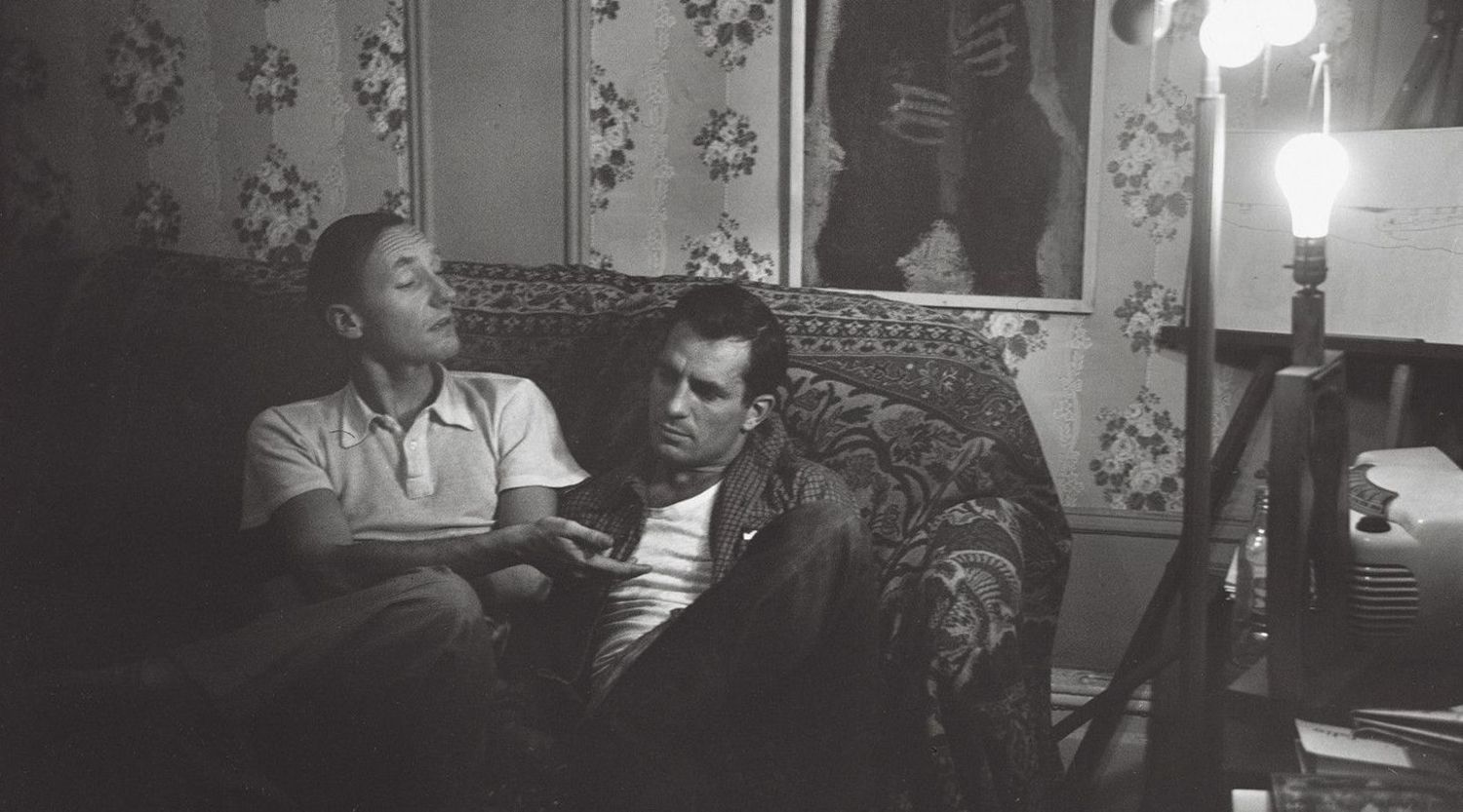Poet, mystic, buddhist, teacher, and spokesman for the Beat generation, Allen Ginsberg also photographed his friends and lovers over the years. He made albums of these photos, with elaborate hand-written captions. Ginsberg’s “photographic memoir of the Beat era” captures intimate moments with many of the leading writers, poets and artists who emerged in the 1950s and 1960s. A selection of more than 70 of these annotated photos was published by Chronicle Books in 1993, as Snapshot Poetics.
Ginsberg spoke about his photographs, and his ideas about photography, while he was preparing the book:
My picture taking goes back to 1945 or 1946, when I got my own box camera and took a bunch of pictures with Burroughs, his wife Joan, Kerouac and Hal Chase…I took a couple photos of Herbert Hunke and Burroughs on their Texas marijuana farm…
But I really didn’t get into picture taking until 1953, when I went to a 3rd Avenue second-hand store and bought a Kodak Retina for thirteen dollars and began taking several rolls of film at a time… It was small, it fit into my breast pocket, and it didn’t seem like such a big deal… We all enjoyed fooling around… The photo sessions never lasted more than five or ten minutes, though. We did them while we were in the middle of other matters, like writing or just gossiping… The pictures I took in Tangier in ’57 and ’61 still have the character of occasional and intermittent epiphanies for me.
My interest in pictures was more sacramental than photographic. I didn’t see myself as a recorder of events or as being involved in a continuous reportage.
I’m afraid that I’m more into continuous reportage now. As a matter of habit I carry a camera where I used to carry a notebook. I’m finding that I write less and less in my notebooks now – I do my sketching and observing with the camera instead. It’s beginning to displace writing a bit – not the poetry, though, but the peripatetic notes I used to take. It’s a little bit wrong, no doubt about it, because I’m not as good a photographer as I am a writer, and should stick to my original trade – but you see, as Robert Frank says, photography is an art for lazy people, and he’s right.
When I saw Berenice Abbot’s photographs, I liked the idea that you could go back in time, say, July 16, 1936, Herald Square – it was like going back in a time machine. I may even be in that photograph, walking to Gimbel’s with my mother through the crowds that I remember so vividly. At sixty years old, I could suddenly see the world again as it was when I was ten. This revelation added to my awareness of the special powers of photography.
Ginsberg became friends with Berenice Abbot, and she told him: “Don’t be a shutterbug, young man. All these photographers with their 35 millimeter cameras go snap, snap, snap and can’t get anything that way… You have to set something up and use a large negative so that you can get the detail.” He related that idea to what the Buddhists call “panoramic experience” and what Blake called “minute particulars”.
Curator Sarah Greenough writes: “The same ideas that inform his poetry—an intense observation of the world, a deep appreciation of the beauty of the vernacular, a celebration of the sacredness of the present, and a faith in intuitive expression—also permeate his photography.”
In the late 1980s and early 1990s, together with Robert Frank, Ginsberg developed a course that they taught together, called Photographic Poetics. Ginsberg talked about that teaching:
I traced the origins of the imagistic ground of poetry that I had learned from Williams and its relation to the photographic practice. For instance, take William’s poem The Red Wheelbarrow:
so much depends
upon
a red wheel
barrow
glazed with rain
water
beside the white
chickens.
It’s just like a photo.
In a sense, writing poems and taking pictures have been two discrete but very closely related activities. What I teach my poetry students in terms of snapshot poetics these days might also serve photography students, as you may see from the slogans I put down for my class at Naropa Institute in Boulder:
Ordinary mind
includes eternal perceptions.
Observe what’s vivid.
Notice what you notice.
Catch yourself thinking.
Vividness is self-selecting.
First thought, best thought.
Subject is known by what she sees.
Others can measure their vision by what we see.
Candor ends paranoia.
***
All quotes by Allen Ginsberg are included in the great photo book published by Chronicle Books in 1993, Snapshot Poetics.























